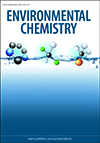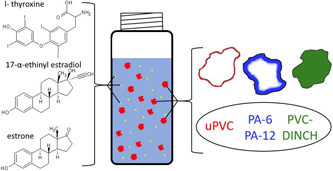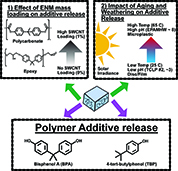Jason M. Unrine (Ed.) (University of Kentucky)
Thilo Hofmann (University of Vienna)

Environmental Chemistry
Volume 18 Number 3 2021
RESEARCH FRONT: Plastics in the Environment

Environmental context. Microplastic fibres (MPFs) released from textiles are routinely found throughout the environment as an indicator of human impacts. The presence of MPFs in industrial wastewater effluents shows that attention should be placed not only on domestic release but also on the upstream processes of textile production. In the context of global MPF release, the ability to target and treat industrial effluents may significantly reduce a potentially major point source.

Environmental context. The effects of the presence of polymer additives and polymeric structure on sorption of xenobiotics to microplastics remain unclear. Our results combined data from experimental sorption batch experiments using three environmentally relevant model sorbates with confocal microscopy. This provides clear evidence that both factors play a major role in sorption strength and the underlying sorption process, affecting sorption onto the particle surface and partitioning into the bulk polymer.
EN21030 Abstract | EN21030 Full Text | EN21030PDF (1.3 MB) | EN21030Supplementary Material (245 KB) Open Access Article
Environmental context. Many human activities cause the release of plastic and associated plasticisers to land, where chemicals may persist for extended periods and be taken up by organisms. However, quantitative information of the terrestrial occurrence, fate and exposure of phthalate and non-phthalate plasticisers is lacking. Research into this field is needed, especially as society moves away from phthalates to the next generation of plasticisers which may themselves represent an emerging risk.
EN21033 Abstract | EN21033 Full Text | EN21033PDF (1.2 MB) | EN21033Supplementary Material (748 KB) Open Access Article

Environmental context. Carbon nanotubes are added to polymers such as polycarbonate and epoxy to form nanocomposites with enhanced material properties. Environmental factors including temperature, UV light exposure and pH have the potential to degrade these composites and increase the release of toxic polymer-associated chemicals. This study investigates how carbon nanotube loading decreases the release of known endocrine-disrupting compounds, bisphenol A and 4-tert-butylphenol, from polymer nanocomposites under simulated weathering environments.